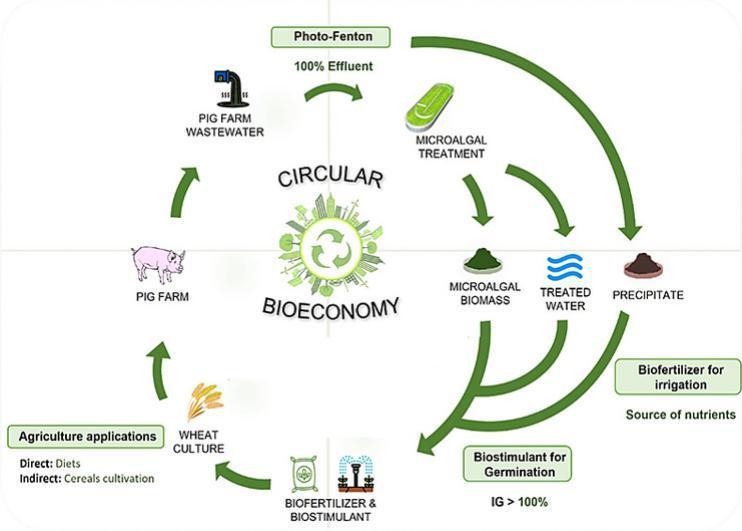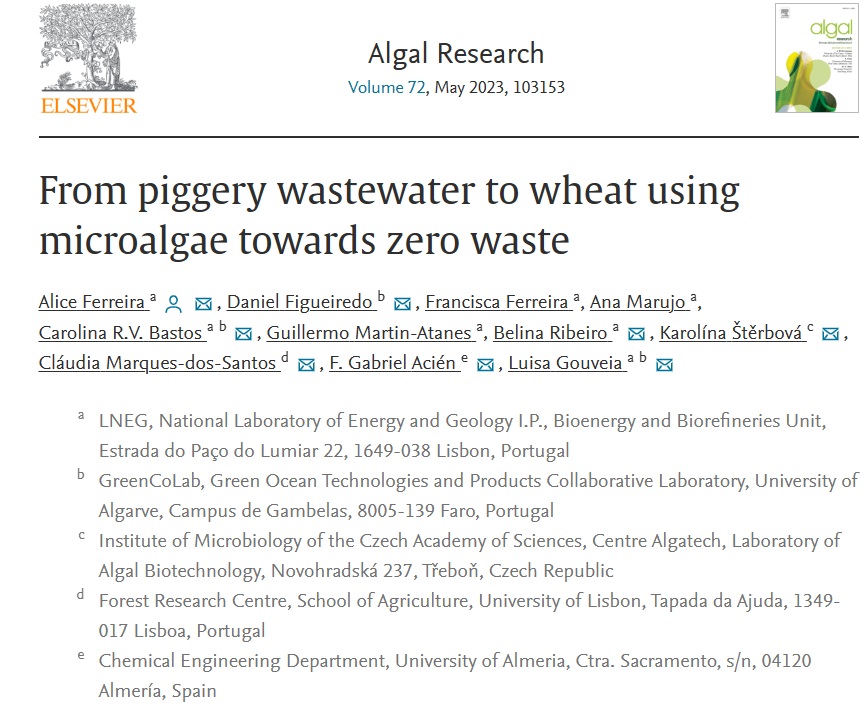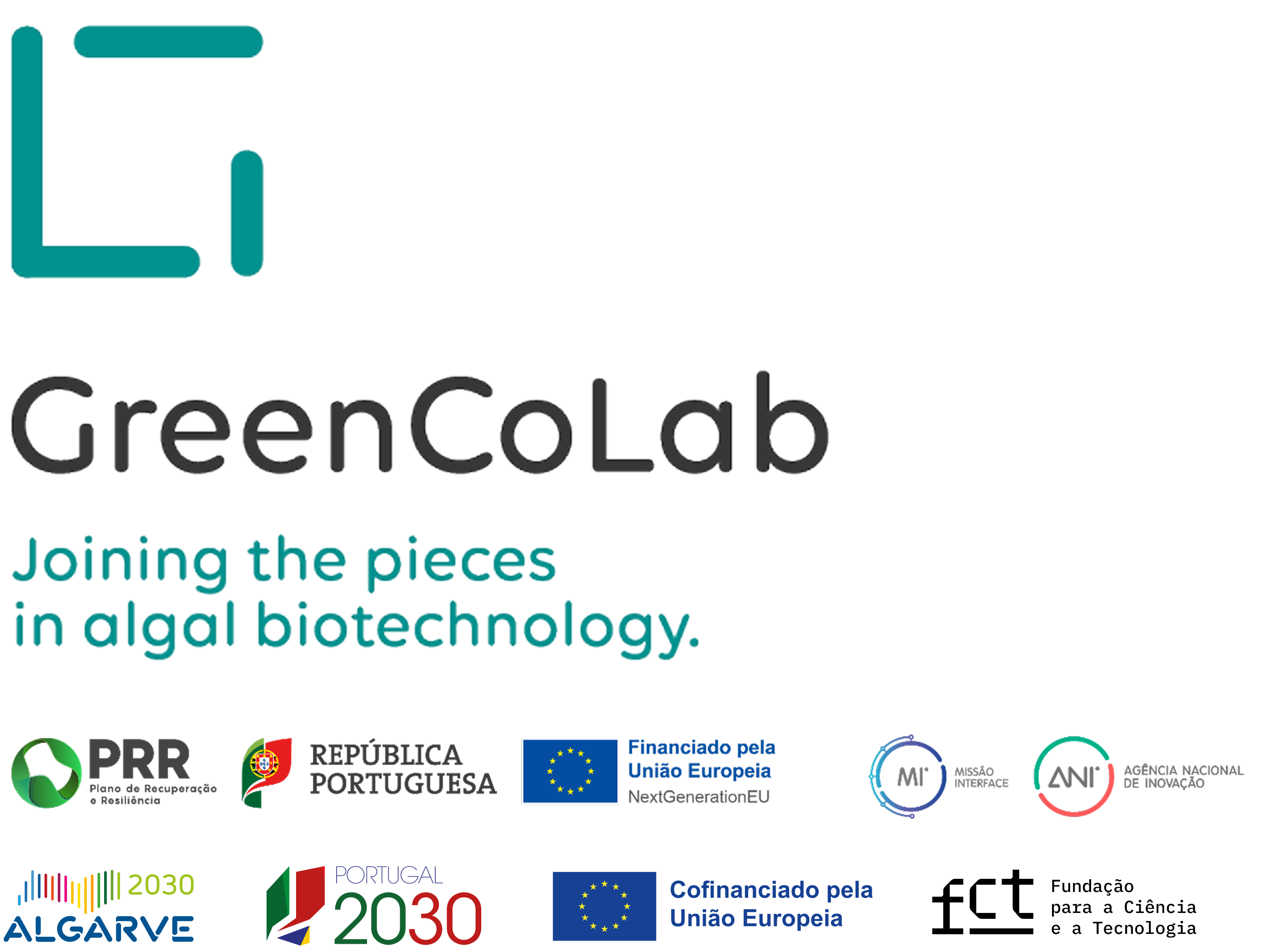

TITLE
From piggery wastewater to wheat using microalgae towards zero waste
JOURNAL
Algal Research
AUTHORS
Alice Ferreira, Daniel Figueiredo, Francisca Ferreira, Ana Marujo, Carolina R. V. Bastos, Guillermo Martin-Atanes, Belina Ribeiro, Karolina Sterbová, Cláudia Marques-dos-Santos, F. Gabriel Acién, Luisa Gouveia
ABSTRACT
Microalgae production is still expensive, driving the need to lower costs while strengthening the industry’s environmental sustainability. Microalgae are recognized tools for efficient wastewater treatment, offering the recycling of nutrients and water for agriculture, and producing biomass rich in growth-promoting compounds to improve plant productivity and resistance to adverse conditions. The use of wastewater can reduce cultivation costs as it is a source of nutrients and water. Alternative low-cost methods can significantly decrease harvesting costs, which represents one of the most expensive steps of the whole process. The goal of this work was to evaluate the potential of wastewater-grown microalga biomass for agriculture purposes. To reduce production costs, the microalga Tetradesmus obliquus was produced in pre-treated photo-Fenton (PF) piggery wastewater in combination with the use of different harvesting techniques – electrocoagulation, flocculation, and centrifugation, and different combinations. From the wastewater treatment process, two fractions (biomass and supernatant) were evaluated for germination and growth of wheat (Triticum aestivum L.) plants and compared to non-harvested microalga culture (MC), distilled water, and Hoagland (synthetic) solution. The concentrated resulting from PF was also tested as a biofertilizer. The results confirm that both biomass and supernatants are useful for agricultural applications. The obtained biomass elicited a 20–105 % increase in germination index compared to the control, while supernatants were inhibiting. The opposite trend was observed at later stages of wheat growth, where the nutrient-enriched supernatants and the PF concentrate (PF-CC) increased the number of tillers (3–5) and leaves (30–42) after 83 days. Wheat plants treated with MC and PF-CC produced similar number of ears (3.4 ± 0.5 and 6.0 ± 4.1 ears per plant, respectively) than the synthetic control (5.7 ± 1.4) after 182 days. All fractions obtained from the process can be used in a zero-waste process.



